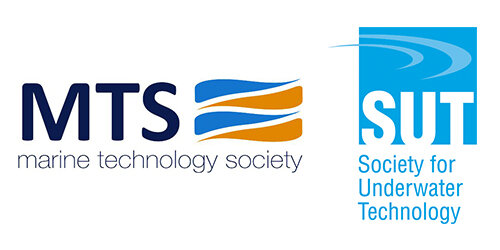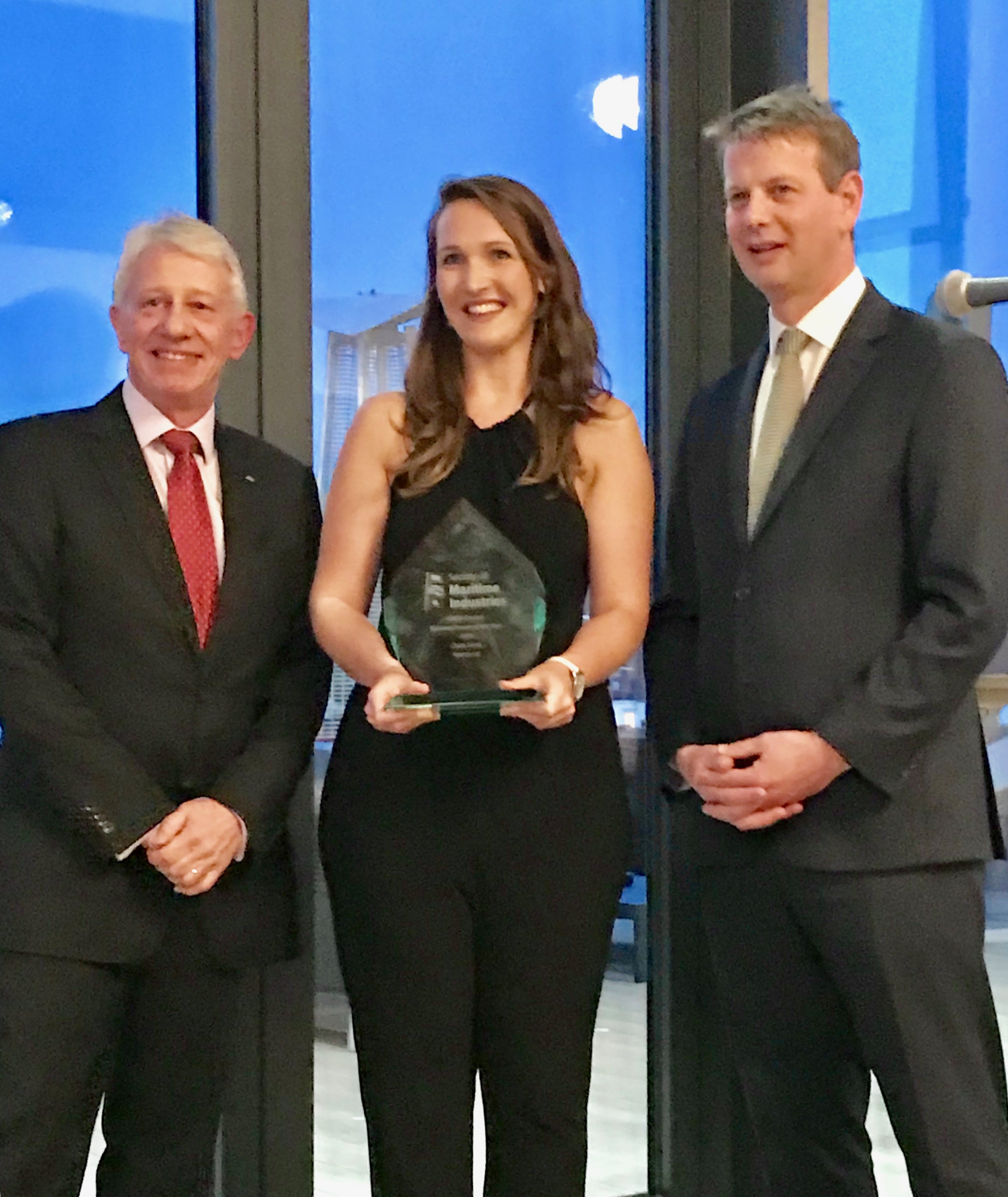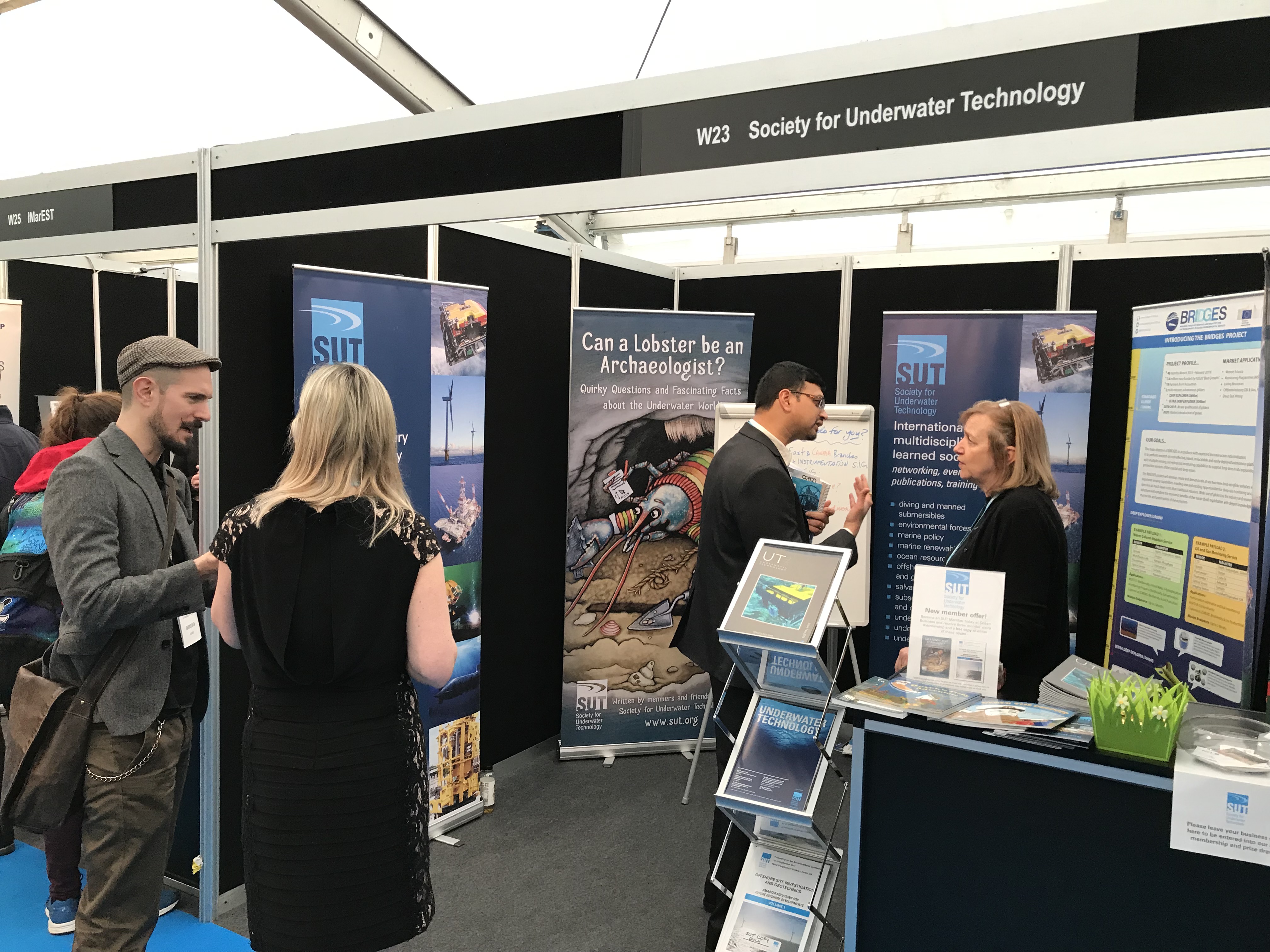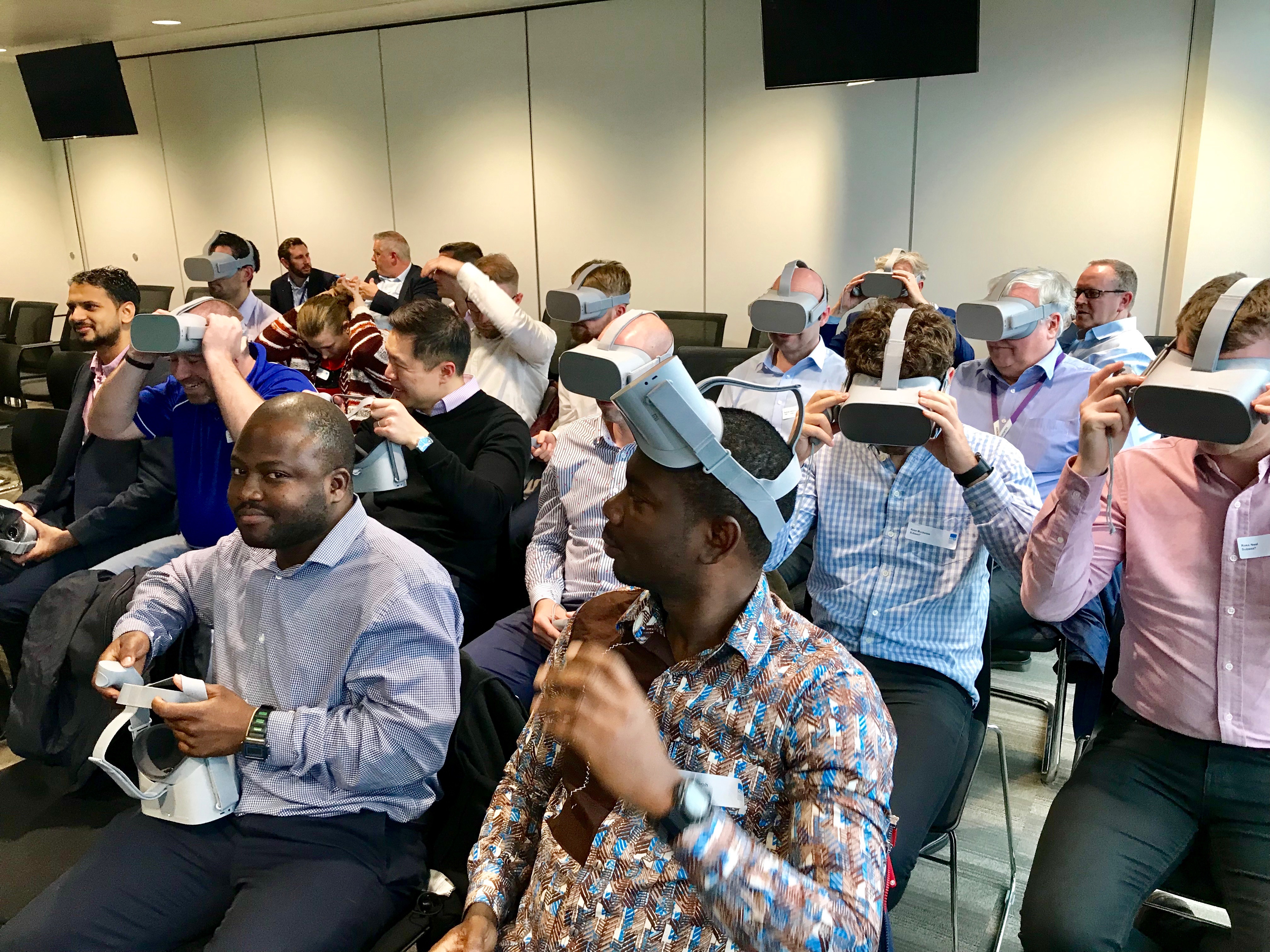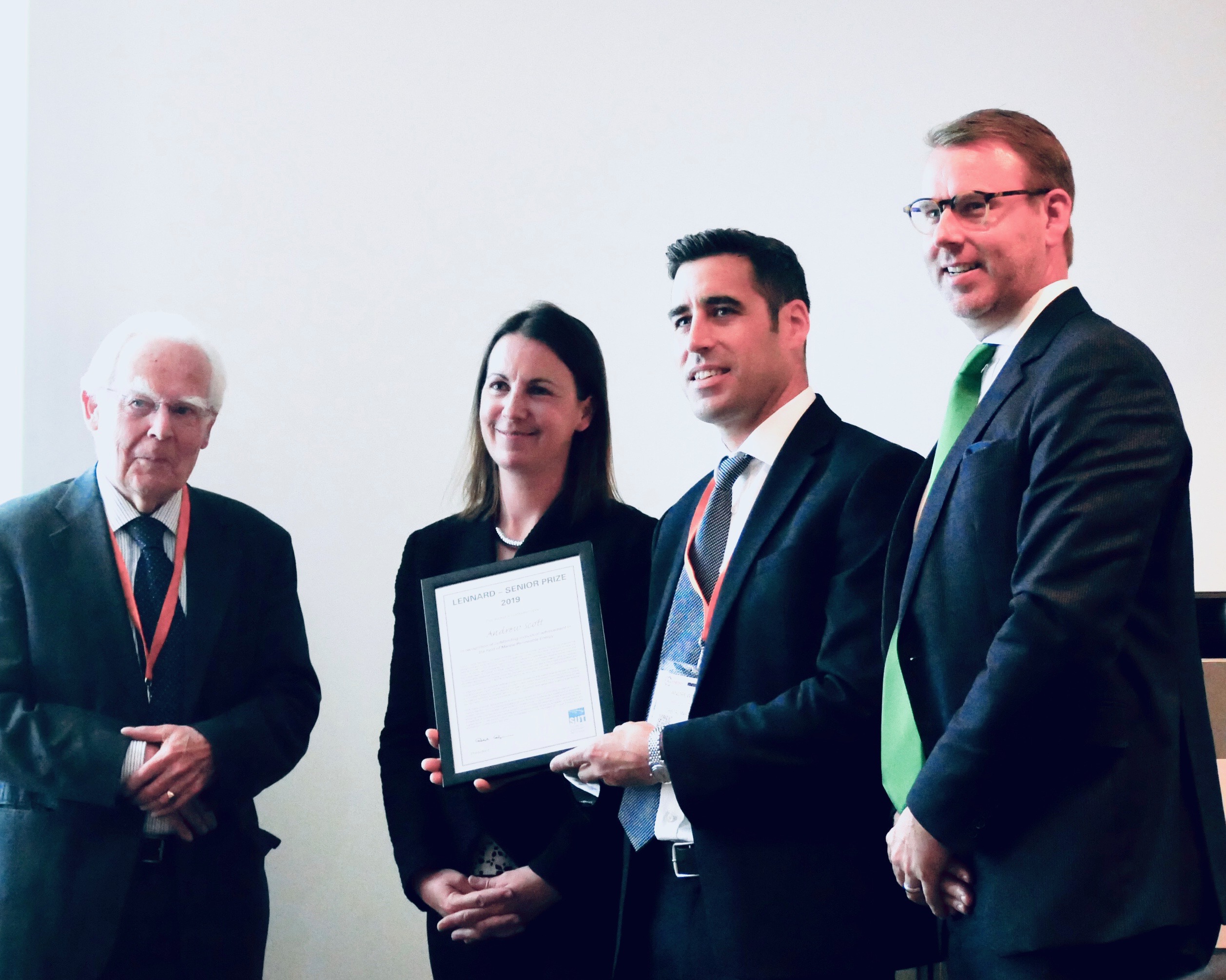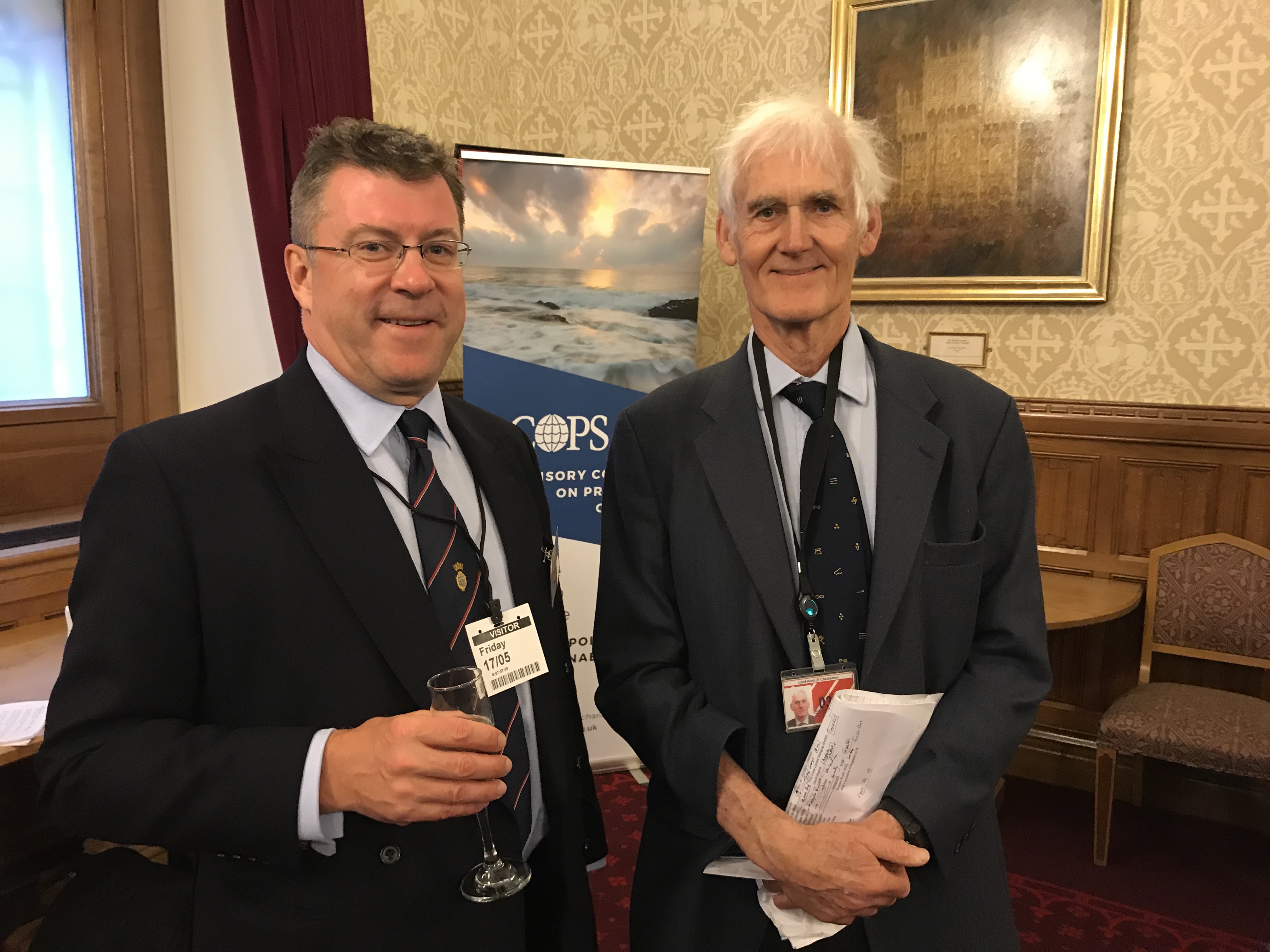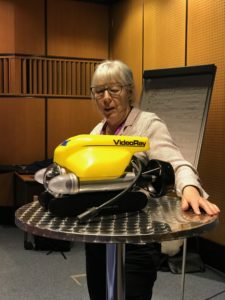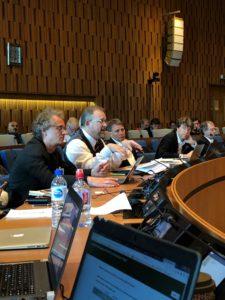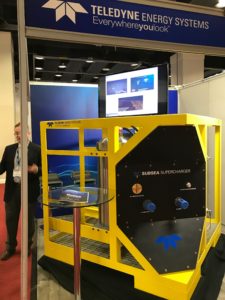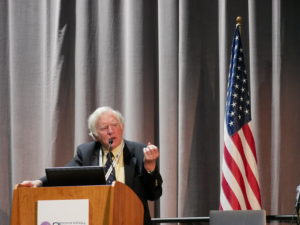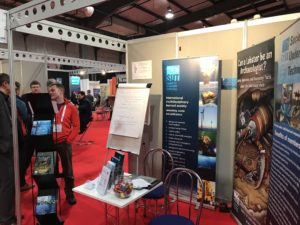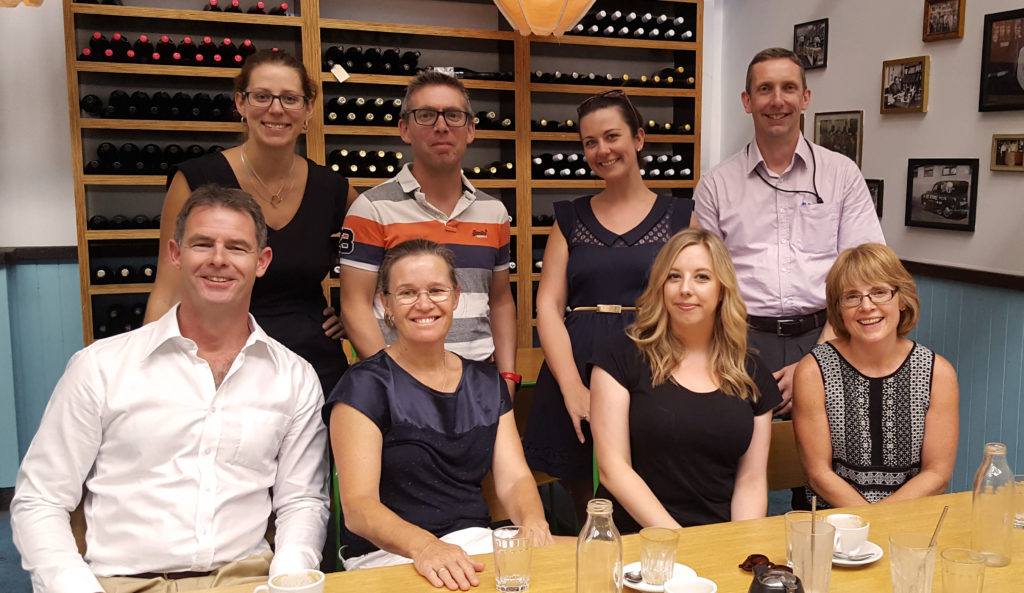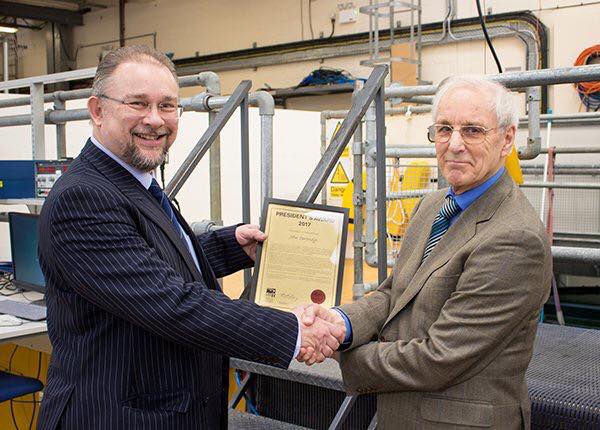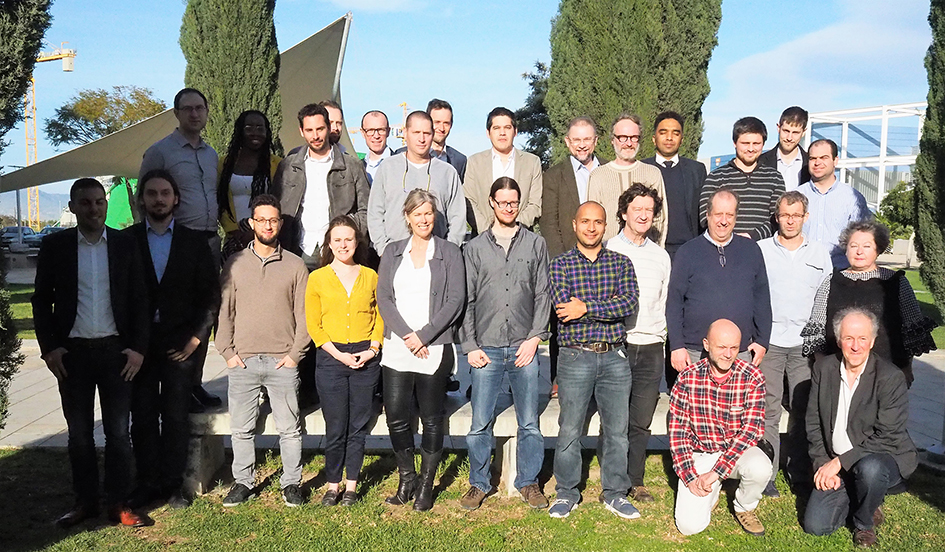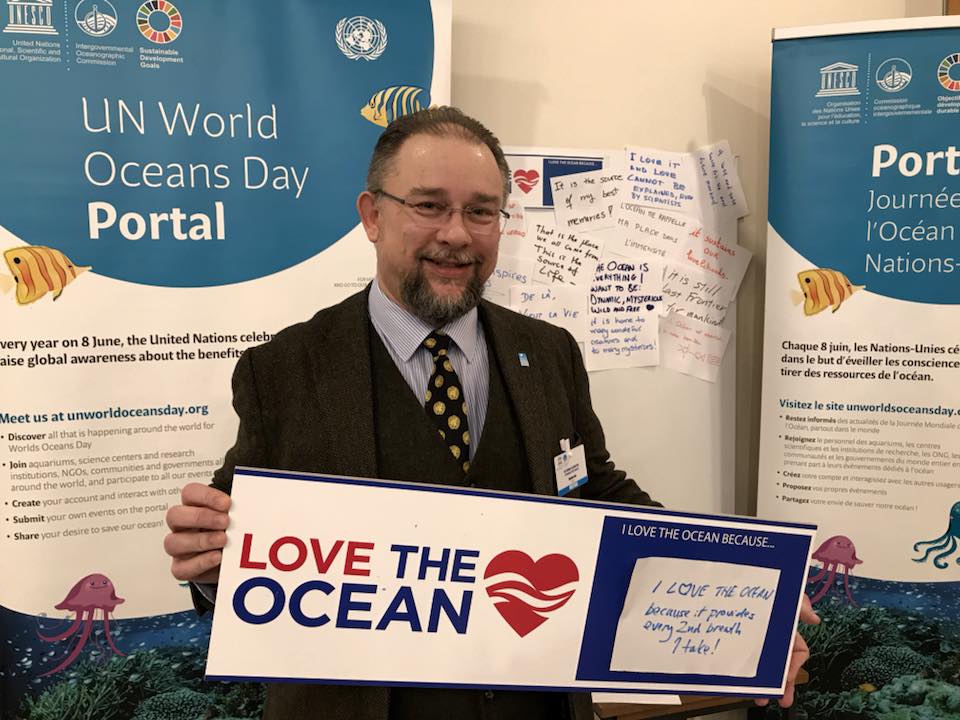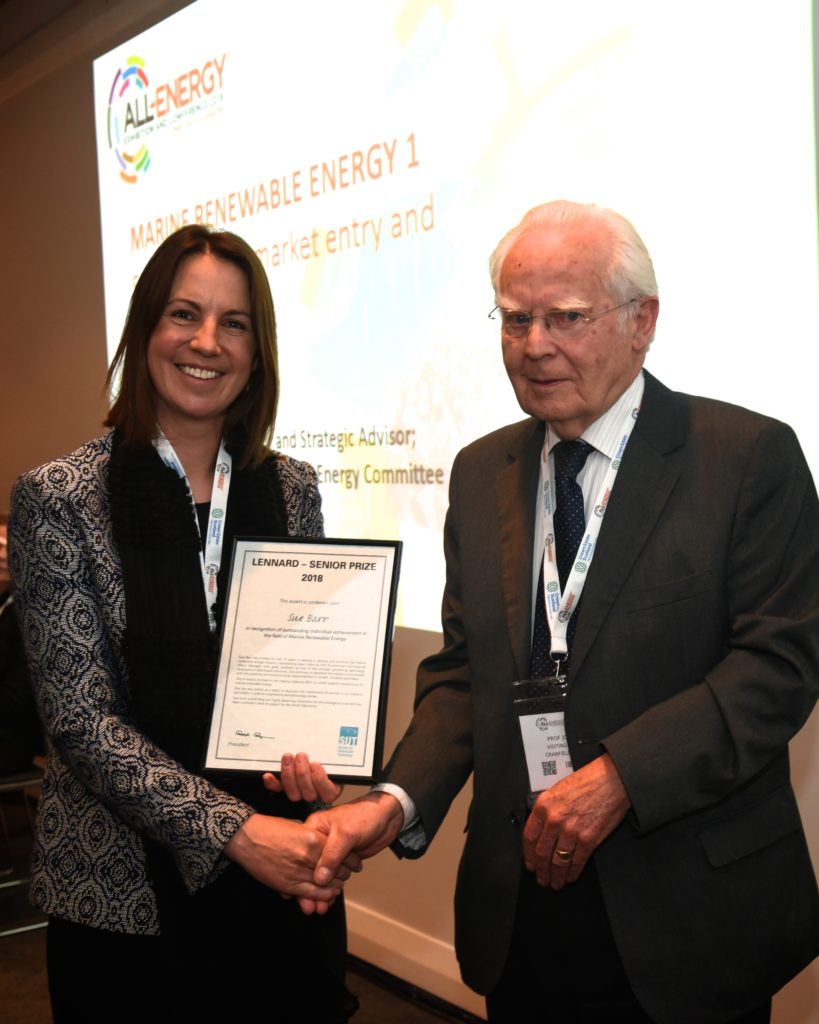The SUT London office is moving on Monday 29th July. Our new address will be 2 John Street, London WC1N 2ES. To contact us by phone please call +44 (0)20 3405 9035.
Uncategorized
The Marine Technology Society and the Society for Underwater Technology Announce Agreement to Collaborate
(WASHINGTON, D.C./LONDON – June 26, 2019) – The Marine Technology Society and the Society for Underwater Technology announced that they have entered into a three-year Memorandum of Agreement to explore ways to work together to the benefit of their collective membership.
“In looking at our organizations, we find that we share similar missions that could complement each other,” said Rick Spinrad, president of MTS. “We are working with SUT to explore collaborations on new chapters and initiatives that could extend our reach and expand our memberships.”
Both SUT and MTS focus on the facilitation, development, and application of marine science and technology for purposes of exploration, understanding, and sustainable use of the ocean and its resources. From their origins in the USA and the UK, MTS and SUT have grown into international organizations with similar levels of individual and corporate membership and with a complementary geographical presence.
“The opportunity for MTS and SUT to work together across areas of common interest provides an exciting opportunity to enhance the services provided to our members,” said Ralph Rayner, President of SUT. ”Under the terms of our Memorandum of Agreement, we are already pursuing a number of joint initiatives allowing us to better deliver membership benefits.”
About the Marine Technology Society
Founded in 1963, the Marine Technology Society is a nonprofit international community of ocean engineers, technologists, policymakers and educators that provides the ocean community with forums for the exchange of information and ideas through international conferences, its peer-reviewed MTS Journal, newsletters and website, www.mtsociety.org.
About the Society for Underwater Technology
The Society for Underwater Technology (SUT) is a multidisciplinary learned society that brings together organizations and individuals with a common interest in underwater technology, ocean science, and offshore engineering. SUT was founded in 1966 and has members from more than 40 countries, including engineers, scientists, other professionals and students working in these areas. To find out more about the Society, including membership, events and publications, visit www.sut.org.
Media Contacts:
Lisa Stryker, Marine Technology Society
Emily Boddy, Society for Underwater Technology
June 2019 Update from SUT CEO Steve Hall
Dear Members and friends of SUT, time has flashed by since I last wrote to you so there’s quite a lot in this newsletter. You can see that we’re busy raising SUT’s profile, opening new branches and supporting our long-term members.
April started with the well-attended Ocean Business event at the National Oceanography Centre in Southampton. It is one of the most popular of the cycle of trade shows, conferences and exhibitions thanks to the dock-side location where exhibitors can demonstrate systems, sensors and an ever-widening variety of autonomous surface and sub-surface systems. Many people comment that it reminds them of the buzz from pre-year 2000 Oceanology International exhibitions when it was located in Brighton, helped by the evening presence of friendly hostelries just outside dock gate 4 and a rich social events list. We had our customary stand in the marquee alongside the dock, were able to interact daily with members and colleagues from sister Learned Societies and Professional Bodies, & contribute to the conference programme. I also gave talks at the careers session and had one-to-one meetings with early career technologists and students to help them seek employment opportunities and give them some ideas about where to focus their efforts.
It was good to see that our friend Versha Carter was thanked for her contribution to getting Ocean Business established and successful, and to our SUT Plus member Claire Cardy receiving the Society for Maritime Industries Marine Science & Technology Business Person of the Year 2019 Award – Claire is now a Director at Nortek and is making a real impact on our community.
Meetings were held by our Marine Renewable Energy Committee, members of the Defence Special Interest Group, Offshore Site Investigation and Geotechnics group and by the Panel on Underwater Robotics. With plenty of SUT members on hand we were able to hold meetings of the SUT executive committee, and engage in detailed discussions with our friends from IMarEST and the Marine Technology Society, which I shall expand upon next.
Accreditation and Professional Registration
SUT is a Charity and a Learned Society, but is not (in UK law) a Professional Body, able to issue things such as Chartered Professional Status. In the UK, only bodies awarded a Royal Charter by the Privy Council can do that, such as the Royal Institution of Chartered Surveyors or Institute of Civil Engineers. Another is the Institute of Marine Engineering, Science & Technology (IMarEST) who have for decades worked closely with SUT and even hosted our headquarters at various times.
After several months of negotiations, we’ve reached agreement with IMarEST to conduct a trial run of acting as a body licenced by IMarEST to issue Chartered Professional Status to our own members, using the IMarEST assessment system and professional categories at first, before developing our own unique post-nominals. From September 2019 we’ll trial a group of about a dozen SUT Members who wish to become Chartered Marine Technologists, and if it’s successful we’ll role out Chartered Marine Engineer and Chartered Marine Scientist in due course, before aiming to develop specialisations such as Chartered Marine Technologist (ROV) or Chartered Marine Engineer (Subsea). If you’d like to be part of that first cohort please drop me an email and I’ll bring you up to speed. Exact pricing is yet to be confirmed but we won’t be undercutting IMarEST’s own fees out of fairness to them, however it does save you the annual cost of also being an IMarEST member if you aren’t one, and you will be able to make an offset for the costs in your tax returns as a formal professional registration fee.
You don’t have to be based in the UK to use the scheme, and it’s quite a vigorous process to ensure that you are up to the required professional standard – but by 2020 we should have the first SUT Members able to use the postnominals CMarTech on our books. It’s a big step forward for SUT, and in time will have quite an impact as we evolve new methods of continued professional development and record keeping, but it will start off small so that we can learn as we go, with support from IMarEST.
SUT and the Marine Technology Society
The other big news is that we’re working with the US-based Marine Technology Society towards an enhanced level of cooperation so that we can help one another in the areas where we operate, increase our collective impact rather than compete in a destructive manner, and try and avoid holding major events and conferences the same week, grow bonds by inviting members to our events and so on. Why should we do so? MTS and SUT are both 1960s-formed organisations with very similar remits, and in a crowded space for Learned Societies it makes sense to co-operate for mutual benefit. MTS are primarily based in the USA & Japan, with high levels of membership in places such as the Woods Hole and Scripps communities, whereas SUT has a broader spread of international membership, and much higher engagement from offshore industry, only significantly overlapping with MTS in Houston – so we’ve made sure that our US branch is aware of the conversations we’ve had, and is able to have their voice heard from the top down.
Rick Spinrad, the MTS President, is well known to me from my former life as Vice Chair of UNESCO’s Intergovernmental Oceanographic Commission as he was a senior member of the US ocean science community, and has known Ralph Rayner, SUT President, for many years. Rick also intends to visit our Perth Branch and attend the AUT 2019 conference in October (https://sut.org/event/perth-aut-2019-conference/) MTS have already voted for a President Elect to succeed Rick, former US Navy officer Zdenka Willis who some of you will know from her work with the US sustained ocean observing programme and Oceanology China events. Zdenka is a keen supporter of growing a closer relationship between SUT and MTS and her eventual appointment ensures stability in our relationship for the next few years.
Defence
SUT now has an embryonic Defence Special Interest Group, initially chaired by Rolly Rogers. The focus is on marine autonomous systems and advanced sensors in a defence context, so for now we’re keeping it invitation-only until the Group has fully agreed the Terms of Reference and level of security clearance requirements, if any. Message me if you’re interested and would like to be a member. Initially NATO-only plus Australia and New Zealand, but this may evolve as the group matures.
SUT Middle East
Adrian Phillips has worked wonders in a short time getting a new SUT Branch up and running in the United Arab Emirates. The first meetings have been held in Abu Dhabi & Dubai, and the core team are already planning new events, engagement in ADIPEC and many other activities. They’re now on the SUT Website, or you can contact Adrian direct at [email protected] to find out more.
SUT West Africa
We’re helping the team in Lagos rebuild SUT in West Africa, and they’ve already held their first Subsea Awareness Course, & started to gain new corporate members. It’s a steep learning curve, and the branch will need assistance and patience as we see it grow and flourish. If there are experienced SUT members reading this who are very familiar with how west Africa works, and are interested in helping to grow and support the Branch, please get in touch as it’s a part of the world where we should be operating, helping to transfer knowledge and build local capacity.
NOC Association & MASTS
I was invited to represent SUT at the National Oceanography Centre Association meeting on 9th May, where we learned about the forthcoming UN Decade of Ocean Science for Sustainable Development, as well as the plans for NOC to enter the private sector as a not-for-profit entity. They have been long-term members of SUT and we have a good relationship with the staff, a number of whom serve on our committees and special interest groups. SUT Corporate Membership provides some valuable insight from industry to the people at NOC, and our advice and input to their future development is appreciated. On a similar front I have been invited to the Marine Alliance for Science & Technology Scotland (MASTS) meetings, as has Moya Crawford (Chair of our International Salvage & Decommissioning Committee); we create a substantial contribution to their annual science meeting with a specialist salvage and decommissioning workshop.
LSE evening meeting
I enjoyed the Subsea 2.0™ & iEPCI™ evening presentation hosted by TechnipFMC on 9th May, very educational for people like me who don’t come from an oil and gas industry background. The use of virtual reality headsets really put you into the centre of the virtual oilfield and I learned a lot.
All-Energy
I spent a couple of excellent days in Glasgow in May, visiting the facilities at Strathclyde University, and attending the All-Energy exhibition and conference where Dr John Sharp, Chair of our Marine Renewable Energy Committee, was able to award the Lennard-Senior Prize to Andrew Scott, very well deserved and a rare occasion where previous winners were also in attendance. Thanks go, as ever, to Judith Patten for her energy and enthusiasm, and to the Reed Exhibitions team who ensured another good show in Glasgow.
It did however raise again the awareness that we need a Branch or Chapter to cover pent-up demand for SUT in the Glasgow-Edinburgh-Central Belt region, as there is much happening but it’s too far to be effectively run from Aberdeen. Definitely one for my ‘to-do’ list – volunteers to get something up and running would be appreciated.
SUT US & Oceanology Americas
I was really pleased to see that our US Branch have entered into an agreement with the organisers of Oceanology Americas to support the future conference series. Jan Van Smirren, supported by Zenon Medina-Cetina and the Houston staff had done a superb job with the Oceanology Americas 2019 conference in San Diego, so it’s great to see that we’ll be continuing to grow that series in 2021. Well done to all concerned.
ACOPS reception
On 17th May Keith Broughton of LSE Branch and myself were honoured to be invited by Lord Julian Hunt to an evening reception at the House of Lords by the Advisory Committee on Protection of the Sea, ACOPS, one of the oldest ocean-related NGOs started off by the late Prime Minister Lord Callaghan back in 1953, when as a junior MP he’d noticed oil pollution staining the swimming costumes of his children when holidaying in South Wales and visiting the beach. In those days ships would routinely flush their tanks at sea and Callaghan’s efforts eventually led to the banning of that practise. His daughter, Baroness Jay, was present at the meeting. We had very good presentations from Lord Hunt, our good friend & SUT Member Dr Philomene Verlaan (a rare example of a lawyer who is also a sea-going research scientist, specialising in ocean mining) and ACOPS director Dr Youna Lyons, who is based in Singapore – so a possible future link with our Branch there. I subsequently met with Philomene and Youna the following week for a detailed marine policy discussion – SUT’s links with academia, industry and government puts us in a unique position to help inform debate and discussion on ocean stewardship, resources and future management systems.
Aberdeen SAC
We had another successful Subsea Awareness Course in Aberdeen, showing again that the industry is recovering and demand for placing staff on courses is rising. My thanks to Jacqui and Lisa, our Aberdeen-based staff, and to our volunteer instructors Tony Laing, John Lawson, Paul Benstead and Bill Nicholson from BP, Sean Bonner and Steve Christison of BHGE, Joao Melo, John Harris, Andrew Reilly, Darren Philp and Vicky McBain of Oceaneering, Scott Cassie, Paul Yeats, David Yule, François Avon, Steve Benzie, Craig Flockhart, Stuart Rae, Mark Main, Gordon Craig, Paul Hekelaar, Ben Mair, David Procter and everyone else involved at i-Tech 7, Dale Tikasingh and Kevin Attree at ProServ, and Hooman Haghighi, & Keith Anderson from Wood.
Xodus reception
On 23rd May I was invited to the launch of the refurbished offices of Xodus Group in London. I was particularly impressed to learn that they had recruited 30 young people in the last 12 months, it’s brilliant to see innovative companies encouraging new engineers, technologists and scientists into the subsea sector and taking a real interest in getting them well trained and engaged with complex projects from the start.
ErasmusMATES – Skills for the Blue Economy
Back into the policy space, I was invited (and paid for) to attend a meeting in Brussels on 28th May about how we train the next generation in skills and academic subjects to service the needs of the emerging blue economy in Europe and beyond. It was an opportunity to present the role of Learned Societies such as SUT to policy makers, academics and European civil servants. Regardless of ‘Brexit’, SUT is an international organisation and our members will be working all over the world as we move into a whole new realm of offshore industries, discovery and technologies in coming years.
Coming soon
I’ll be talking on 12th June on the theme of ‘Blue future – New technologies, new ocean industries and SUT’s role in delivering the Blue Economy as a midweek lunch and learn – register for tickets at https://sut.org/event/london-south-of-england-lunch-learn-save-the-date/ it will be good to meet members and talk about the future.
In June I’ll also be meeting with colleagues from the Marine Biological Association and IMarEST to see how we work together more effectively, and we’ve been offered free stand space at the IEEE-MTS ocean conference in Marseilles. If anyone is in the area and would like to volunteer to ‘man the stand’, please get in touch – but time is short as it’s 17-19 June.
For those of you interested in the defence space we are one of the Learned Society supporters of the wonderfully-named ‘Engine as a Weapon’ conference, number 8 occurs this year in July – see https://www.eaaw.org.uk/ Future naval platforms will have directed energy weapons, magnetic railguns and other features straight out of science fiction, and the young engineers and technologists in training today will deliver that capability.
Membership renewals go out in July and this year we’ll be launching a Patrons Scheme too – I’ll send out a separate message for Members describing the scheme, its aims & objectives, and the benefits of becoming a Patron of SUT as soon as possible.
We do still need to ensure our survival by growing the Society – so please encourage your friends and colleagues to join SUT, as individuals or as Corporate Members – we still lose more people than we gain each year as members retire from the industry and the next generation don’t join in their place. I’m hoping that launching the accreditation system mentioned at the start of this newsletter will start to bring in a new cohort of members, but the need to grow is urgent and ongoing. Bring a colleague!
Finally, after two years in Chancery Lane it’s time for a new office contract, and the best value option we’ve found is to move a few hundred metres north to John Street, WC1N, off Gray’s Inn road. For those of you who’ve visited our current office, you’ll know that it’s in a basement with no natural sunlight, and after two years in the dark my staff and I are going a bit mad, so we’ve chosen a nice space with a window and sunlight to see us through the next couple of years as we progress from where we are now to a growing Society able to offer professional registration, the beginnings of a global network of allied Societies and a key role in delivering the UN Decade of Ocean Science for sustainable development too. It’s going to be challenging, and fun.
Steve Hall 4th June 2019 [email protected]
April 2019 Update from SUT CEO Steve Hall
Dear SUT Members – March was another busy month for SUT, with branches delivering a number of activities including a Subsea Awareness Course in Aberdeen, the popular Global Offshore Prospects presentation from Westwood Global Energy, schools events for the UK’s National Science Week, as well as a full range of activities across the global network.
For me the month started with a return from Oceanology Americas, followed by a short period of leave and engagement with our International Committee, the schools events and representing SUT at IMarEST’s AGM and Annual dinner. I was invited to St John’s Newfoundland to give the guest talk at the Oceans Advance (see http://oceansadvance.net/) AGM, and was made very welcome while I was in town, having the opportunity to meet local industry (special thanks to Subsea 7), give a guest lecture to students at Memorial University’s Marine Institute, and get to the see the excellent facilities at Memorial’s School of Engineering, the National Research Council of Canada’s impressive test facilities, the offsite marine base at Holyrood, and the Autonomous Ocean Systems Laboratory in St John’s where I met the prototype ‘Seaduck’ – an autonomous vehicle with a difference, as this one behaves as a surface vehicle then up-ends itself and can profile vertically to 200m, return to the surface and continue the mission.
It’s designed to map icebergs and is one of the most innovative examples of ocean technology I’ve seen for a while. Contact Neil Riggs at Memorial for more information.
We fully intend to launch our first SUT Canada Branch in St John’s this summer, and if my visit is any indication it promises to be a successful new part of the SUT Community. Key point of contact is Paul Ryan at Memorial, or through me while we get the initial committee in place.
Meanwhile Adrian Phillips and his colleagues have launched several activities at our new Middle East Branch, focused on Dubai and Abu Dhabi, and using Al Khalifa University and Heriot Watt UAE campus as the base for events. Things are moving quickly there and I’m delighted with the progress to date.
In the final week of March I was invited to take part in the AtlantOS Symposium at UNESCO HQ, to make the case for how private industry, Learned Societies and Professional Bodies can engage in delivering sustained ocean observations in the Atlantic, and in support of the UN Decade of Ocean Science for Sustainable Development 2021-2030. I’m grateful to the German research organisation GEOMAR for covering SUT’s costs to attend the meeting, and for recognising that we are key players in the science/technology/ocean policy interface able to speak for a large community. I’ve attached the text of my ‘intervention’, as they are known in UN circles, at the end of this newsletter.
This week myself, David Saul and David Brookes plus many of our members took part in the MCE-Deepwater Development conference and Exhibition in London, chairing sessions and with David Saul delivering one of the technical talks. Next week it will be full-on for Ocean Business in Southampton – we’ll have a booth in the dockside marquee and I look forward to meeting members and recruiting new ones – this is key to our growth, if you know anyone who isn’t yet an SUT member please encourage them to join – we’re remarkably good value!
Other news – we’re making progress on developing a partnership for accreditation and training that will be discussed at SUT Council later in April, more news on that very soon.
Business Opportunity – Our friends at the Marine Management Organisation have asked me to let members know about a project to develop Technology Roadmaps for UK Overseas Territories, as part of the ‘Blue Belt’ Programme, with a focus on monitoring and surveillance against illegal fishing.
I am not able to send a direct link, as users must register with the Defra online procurement portal to access the opportunity: https://defra.bravosolution.co.uk/esop/guest/login.do
It can be found by searching the title once logged in: ‘Tender for Technology Roadmaps for Sea Fisheries Compliance and Enforcement in UK Overseas Territories’
The closing date is 29 April 2019, with the deadline for clarification questions on 12 April.
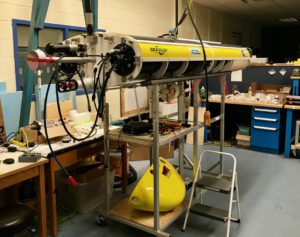
Prototype ‘Seaduck’ autonomous vehicles at the Autonomous Ocean Systems Laboratory, Memorial University
Our Member the National Oceanography Centre has also been in touch asking if I can raise awareness of the 9th Annual Meeting of the NOC Association on 9th May in London. Jackie Pearson writes:
“There are still some places left for the 9th Annual Meeting of the National Oceanography Centre (NOC) Association on 9th May 2019 at Central Hall Westminster. After a morning of Association business, the afternoon will focus on the United Nations Decade of Ocean Science for Sustainable Development (2021-2030) and we are keen to hear views from the marine science and technology community on how the UK might contribute to this initiative.”
The agenda and registration page for this free event are available on this link: https://noc-association-2019.eventbrite.co.uk and to access, please use password: NOCA2019
If you have any questions, please contact NOC Association Secretary Jackie Pearson on [email protected] or telephone 023 8059 609
As members will know I’m aiming to write one of these newsletters every month, so do please forward me stories, ideas or areas for discussion that I can raise with members. My direct email is [email protected]
Finally for this newsletter I’d like to send my very best wishes to Jennifer Maninin, the very able administrator of our Perth Branch, who has left us temporarily to go on maternity leave. I’m sure that all of all of us at SUT send Jennifer our best wishes and we look forward to hearing her news soon.
Appendix to April Newsletter:
Text of the Intervention made by Steve Hall, CEO SUT, on behalf of marine Learned Societies and Professional Bodies at the AtlantOS Symposium, UNESCO March 2019
Delegates – my name is Stephen Hall, I’m Chief Executive of the Society for Underwater Technology, an international Learned Society for Marine Science & Technology, established in 1966. Like many who work in our wide & varied ocean world I’m a member or Fellow of several other Societies in addition to my own, including the Marine Technology Society, Institute of Marine Engineering, Science & Technology, Scottish Association for Marine Science, and the Challenger Society for Marine Science.
So what value does the global family of Learned Societies & Professional Bodies add to sustained ocean observing in the Atlantic, and to the UN Decade of Ocean Science for Sustainable Development? I believe that our community has much to offer. Between us, rather like an international Trade Union or traditional Master’s Guild, we represent the many thousands of individuals of all nationalities who spend their working lives at sea, or work onshore managing, building and planning new offshore activities, from coast to deep ocean. We greatly outnumber the community of government & university sector marine scientists, are often well funded, and equipped with state of the art ships, autonomous underwater vehicles and sensors. We have the women & men who work at sea on oil and gas platforms, who install & maintain offshore renewable energy systems, who survey & install new cables and pipelines, who salvage damaged & sunken vessels, who plan new industrial installations, who work on fish farms, who work for marine spatial planning organisations, as private consultants, as media divers, who drive and maintain ships and submarines, who create wealth from the abundant resources that the ocean is able to provide when managed in a sustainable manner, informed by scientific evidence and accumulated experience, shared by members at networking evenings, mentoring, business breakfasts, seminars and through our publications.
We are just at the start of a new era, where a world that must decarbonise quickly will find that the raw materials & metals required for the electric vehicle and renewable energy revolution are often found in the deep oceans and mid-ocean ridges, largely in areas beyond national jurisdiction. New kinds of machinery, new methods of autonomous survey, mineral extraction and seabed remediation will be developed and deployed in the next ten years. All of this activity generates data – metocean conditions for offshore operations and safe helicopter and drone operations; benthic biodata for seabed assessment and risk mitigation; full-ocean-depth oceanographic measurements so that robots can operate safely at 6000 metres and beyond, new cabled observatories, subsea communications and recharging points.
Our members will be developing systems that allow autonomous surface vessels to navigate safely even if satellite navigation systems are being actively jammed or tampered with, we’ll be deploying sensors that will monitor sediment plumes from subsea mining activities, we’ll operate the most advanced and safest possible offshore plant to make hydrogen fuels, to bury carbon dioxide, even to re-stock the oceans with ranched finfish species. It’s an exciting time to be involved in offshore industry.
AtlantOS & UN Decade of Ocean Science for Sustainable Development can work through the Learned Societies and Professional Bodies to agree codes of practise, metadata standards, and data sharing protocols so that the terabytes of ocean data gathered by our members in their routine operations are not wasted, or never see the light of scientific analysis. We’ll need to organise our mutual relationships a little better and form some new alliances to be well placed to help, but we can do that – the will is there. All of us publish peer-reviewed journals, we all want to see clean, safe, sustainably-managed yet wealth-creating ocean and seas able to provide essential energy, raw materials & products, and fulfilling careers for the next generation.
I see huge opportunities for the international marine science community to develop new partnerships with industry. In a world where there are never enough research ships and sensors to gather all the data we need, private sector platforms, robotic or human-occupied, can act as additional systems for gathering ocean data, especially from deep waters far from the continental shelf. All of the Learned Societies have Continued Professional Development systems either ready or under development, they are engaged in training, safe working practices, and meeting Societal Need. We all encourage young people to join our sector, we all issue scholarships and have school liaison programmes. AtlantOS and UNESCO’s Intergovernmental Oceanographic Commission will find us only too willing to contribute what we can, for the benefit of humankind, to support the UN Sustainable Development Goals, and to manage the exploitation of ocean resources in the least-harmful possible manner so that all of the creatures who live in the One Ocean can live in healthy ecosystems including a large percentage of the global ocean left as unexploited, sanctuary space able to repopulate neighbouring waters.
Thank you
Steve Hall, CEO Society for Underwater Technology
2015-2017 Vice-chair Intergovernmental Oceanographic Commission Group 1
March 2019 Update from SUT CEO Steve Hall

Margaret Leinen being presented to SUT/Oceanology International Lifetime Achievement award – photographed with Ralph Rayner and Rick Spinrad
Greetings to all our members and colleagues in the wide world of Underwater Technology. I’m just back from Oceanology International Americas 2019 where our US Branch played a key role in developing & delivering excellent conference sessions, engaging with industry and ensuring a strong Learned Society presence throughout the event. Our President Professor Ralph Rayner was a guiding presence throughout the preparations for OiA19, chaired the prestigious Ocean Futures Forum and more besides. Several of the technical sessions in the conference programme were chaired by SUT Members, with me covering autonomous underwater systems & navigation. We were the Learned Society supporters of the ‘Catch the Next Wave’ event held in partnership with the Explorers Club, sponsored by the X-Prize foundation and co-supported by the Monterey Bay Aquarium & Research Institute & Sonardyne – and we were particularly honoured to be able to present, with exhibition organisers Reed Exhibitions, a Lifetime Achievement Award to Margaret Leinen, Director of the Scripps Institution of Oceanography (for a brief bio click here)
A highlight for me was during the 50 years of Oceanology International Session, listening to Don Walsh – a very sprightly 87 – recount the mission to the bottom of the Marianas Trench as commander of the bathyscaphe ‘Trieste’ back in 1960. Inspirational stuff!
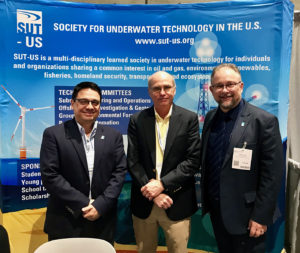
Steve with Zenon Medina-Cetina, Chair of SUT-US, & Professor Scott Glenn of Rutgers University, past recipient of the SUT Oceanography Award, at the SUT stand at Oceanology Americas
Oceanology International Americas provided a showcase of SUT’s expertise & membership within a broad range of subject areas and I’d particularly like to thank Jan Van Smirren for his work in developing the conference programme, to say thank you for the input of Dr Zenon Medina-Cetina, Christopher Curran, Andy Hill & the Houston-based committee, and to SUT’s early career members Tai Prince & Devvrat Singh Rathore for their help throughout the event. My thanks too to Reed Exhibitions for their close working relationship and support as we worked together to celebrate 50 years of Oceanology International – which started as a SUT event back in 1969. In 2020 the 25th Oceanology International will take place in London and we will once again play a key role in celebrating what our industry has achieved over half a century and more.
Other events since the start of the New Year that I’d like to mention include the SUT Aberdeen Business Breakfast at the end of January, where Tony Laing and his colleagues presented an encouraging message of new growth in the North Sea sector and an opportunity to meet our members in the pleasant and snowy grounds of the Marcliffe Hotel. This was quickly followed in February by Subsea Expo where SUT had a well-attended stand at a busy exhibition and I’m pleased to say we signed up several new members, corporate and individual. There was an excellent Global Offshore Prospects ‘Lunch & Learn’ by Douglas Westwood hosted at Price Forbes in London on 12 February, and although I wasn’t able to attend them I can see that our North of England & Perth Branches have also held successful events in the last few weeks. We look forward now to the first of 2019’s Subsea Awareness Courses in Aberdeen from 11 March, and I’ve invited to give talks this month at two high profile events – I’m the guest speaker at the AGM of Oceans Advance in St John’s, Newfoundland on 21 March & on 27 March I’ll be speaking on the role on industry in providing sustained ocean data observations at the AtlantOS Symposium at UNESCO.
Why Canada, and why UNESCO? SUT is working with partners in Newfoundland and Nova Scotia to launch our first Canadian branch this year. There’s an eager, healthy cluster of marine technology industries there, and we’ve been made very welcome by the existing community in Newfoundland to act as the first springboard to growth in Canada. SUT is an Observer Member of the Intergovernmental Oceanographic Commission of UNESCO, where I used to serve as Vice Chair, and as such we are one of the very few industry / non-governmental voices able to input into the development of the coming UN Ocean Decade for Ocean Science for Sustainable Development. Our members are very well-placed to be able to assist governments in their efforts to better-understand the ocean environment, and to be able to use our advanced technologies, databases and real-world experience of working at and under the surface to help meet the challenges posed in ocean governance, sustainable use of resources, technology transfer, knowledge exchange and responding to sea level rise, ocean acidification and warming.
New Branch – SUT MIDDLE EAST
A big Thank You to Adrian Phillips and his supporters in the United Arab Emirates who are in the midst of setting up our very first SUT Branch in the Middle East. From an initial ‘gauging the interest’ meeting during ADIPEC late last year, things have progressed rapidly and the first two events take place on 8 April at Heriot Watt University Dubai, and on 22 April at the Petroleum Institute, Khalifa University, Abu Dhabi – see the new Middle East pages on the SUT website or contact [email protected] for more details.
Kuala Lumpur – I was delighted to meet up with Ajan Das, Chair of our Kuala Lumpur, Malaysia Branch, while he was in London early in February. We were able to cover lots of areas of interest, and discussed how to take forward new initiatives, the relaunch of Subsea Awareness Courses, and growth of the Branch.
Growing SUT
It’s very important that we grow SUT, and recruit more individual and corporate members. SUT Council are very focussed now on how we get our Society into a healthy long-term financial position after the challenges of recent years, and I would ask all of you to encourage your friends, colleagues and companies to join SUT if they are not already part of the family – there’s a bright future for our sector as the world transitions away from burning coal and seeks energy, minerals, knowledge, resources and defence space in the global ocean.
See you at Ocean Business 9-11 April at Southampton,
Steve Hall [email protected]
May 2018 Update from SUT CEO Steve Hall
Dear members, friends and supporters of the Society for Underwater Technology. This year is flashing past and it’s almost June so I’m well overdue to send you an update about what I’ve been up to, and how the HQ team, Branches, Council Members and Exec have all been busy delivering our mission to educate and inform people about underwater technology in a multitude of ways.
January started with a welcome visit to London by Nils Vaagen and Tom Eriksen from the SUT’s Norway Branch. We were able to discuss how we can work together to resume a programme of events, and rebuild the SUT’s activities in Norway in coming months and years. I’ll be present at the Underwater Technology Conference in Bergen from 12-14 June and HQ staff will help the branch set up in time as a legal entity within Norway, rather than be the only overseas branch that is still legally part of the UK operation.
Later in January I attended a busy Business Breakfast hosted by our Aberdeen Branch, who have worked hard to deliver a constant series of daytime and evening presentations throughout the year. I’d like to thank our expert volunteers for their work presenting Subsea Awareness Course, the most recent this May was very well received and the next one will be held in Aberdeen from 5th November. We welcomed Scottish Enterprise as new corporate members and I’m working with them on technology foresight matters to help ready Scottish policy makers and industry for the exciting new ocean-related technologies that are going to emerge over the next few years. I was delighted to see that our Aberdeen branch treasurer and SUT Fellow Tony Laing was appointed as the new Director of Research and Market Acceleration for the National Subsea Research Initiative.
We’ve been developing better links with SubseaUK and Decom North Sea, encouraging our members to engage with these organisations to share knowledge and experience, not to ‘reinvent the wheel’ and to help prepare industry for new opportunities becoming available offshore, and have a consistent message to policy makers and government.
SubseaUK’s SubseaExpo in February provided another opportunity to engage with our members, and I was honoured to attend the splendid dinner in the company of senior professionals from across the offshore sector. For me, not coming from an oil and gas background but rather the marine science, technology and policy world, events such as SubseaExpo, Offshore Europe & All-Energy help me to understand the concerns and challenges of the offshore energy sector, be they fossil fuel or renewable, which are quite different from the issues of concern to other parts of our broad membership.
In February and March our publications officer Emily Boddy spent seven weeks on secondment in our Perth Branch, in a highly beneficial learning and knowledge-exchange experience where she became an integral part of the SUT branch in Australia. Emily attended the three-day Australian Oil and Gas exhibition as well as most of the SUT meetings and events that occurred while she was there, meeting dozens of our Perth-based members and helping to strengthen the relationships across the global SUT family.
As official observer members of UNESCO’s Intergovernmental Oceanographic Commission I was invited to be part of their ‘SeaChange’ ocean literacy workshop, where I provided probably the only industry-sector voice. ‘Ocean Literacy’ is a growing movement within the international marine science education community and is a blanket term for how we train the public, industry, decision makers, educators and politicians to better understand how human activities affect the ocean, and how the ocean influences so many aspects of our lives from weather, commerce, access to energy and food, and the defence of our homelands. The theme will be taken again up in October when the European Marine Science Educators Association meet in Newcastle – hopefully an opportunity to engage with our branch there.
Later in February I visited the headquarters of Sonardyne to present our Presidents Prize to founder John Partridge, in grateful recognition of his outstanding and sustained contribution to underwater technology. It was fascinating to be shown around their facilities, meet the staff, and very noticeable what a ‘happy ship’ Sonardyne is, with evidently high morale, a loyal workforce and a real sense of being part of a family of like-minded ocean technologists who want to make a difference.
The end of February brought me to Nicosia, Cyprus, where I attended the BRIDGES deepwater glider annual workshop. SUT is a partner in this EU-funded Horizon2020 project to deliver a deep (2400m), and ultra-deep (5000m) hybrid glider/AUV that is closely tailored to the specialist requirements of future industries such as deep-sea mining, as well as sustained observations and oceanographic monitoring. We’re providing advice on exploitation strategy, industry links and innovative uses of the glider, which begins sea trials soon.
For Science Week in March we partnered with Lloyds Register in London to provide a lecture for schools, departing from our comfort zone and presenting to under-10s rather than our previous teenage audience. Gary Momber did an excellent talk on marine archaeology and shipwrecks, and I provided one on underwater robots that may explore the moons of Jupiter and Saturn by the time the kids are in their workplace prime – hopefully an inspiring message for them.
March also saw Oceanology International and the associated Catch the Next Wave conference take place at London’s ExCel – the SUT had a better-than-usual spot in the exhibitor’s hall where we were able to greet members old and new, and we also displayed a poster (and a tiny 3d-printed model) about the BRIDGES gliders, and for one day hosted a pair of marine licensing specialists from the Marine Management Organisation – the UK government’s agency for issuing permits for all manner of offshore activities within the 200 mile exclusive economic zone (with Marine Scotland doing the same north of the border). I’ve since attended a workshop with the MMO in Newcastle to explain how they are perceived by some parts of industry and to explore how SUT can help them to build a better relationship with contractors.
Catch the Next Wave was an amazing day, themed on underwater exploration – with film producer, diver and explorer James Cameron starting things off with a video welcome address to delegates, and a series of other very fine presenters including Rory Golden, Orla Doherty (producer of BBC Blue Planet 2) and Dr Michael Gernhardt – a NASA astronaut and former hard-hat diver who delighted us with footage from space showing how the techniques used in construction subsea were inspiring how astronauts and cosmonauts assemble and service the International Space Station. It was good for SUT to have our logo in the same space as the Explorers Club and the Shell Ocean Discovery X-Prize. Good too to meet Dr Rick Spinrad who was chairing part of the meeting alongside our president Professor Ralph Rayner. Rick is President-Elect of our sister Learned Society the Marine Technology Society, and we ensured that we had a deep discussion about how we can build a good relationship between our two societies in the coming years.
Since I joined the SUT one of the striking developments has been the growing success of South West chapter of the London and Southern England Branch. Brian Green, with Caroline Acton and Dr Ed Steele from the Met Office, have hit the ground running with a series of events and I expect that the Chapter will soon be a fully-fledged branch. Check out our events page for the next one, 14th June, on Floating Wind.
At the end of March I visited our SUT-US Branch in Houston for the launch of the new Underwater Robotics chapter at Rice University, meetings with industry (learned a lot at Oceaneering) and attendance at one of the excellent social events for members that Patsy, Araceli and the local volunteers are so good at arranging. ‘The Art of Whisky Tasting – version 2’ was kindly hosted by the Chopard Boutique who promised that 10% of proceeds of any sales to SUT members during that month would be donated to SUT-US, I’m all in favour of that! I was also delighted that the Welsh Whisky from the village of Penderyn near my home village was rated very highly by the assembled crowd, the distillery was most impressed when I told them they’re well-regarded in Texas. Our Houston colleagues are working hard on growing SUT’s presence in the Americas, with plenty of new activity beginning in Mexico, and engagement with the West Coast beginning too.
On 4th April we held a Special Meeting of the Executive Committee of Council to go through strategy, growth and future focus for the Society. We agreed on a strapline ‘An International Learned Society for Marine Science and Technology’ that you’ll see gradually appearing on our website, presentations and publications, and as well as enthusiastically providing a Learned Society home for our long-standing members we will aim to grow in three more areas – aquaculture, renewables and defence. We have some engagement already in all of these, especially marine renewable energy, but Council and I will place more focus than has been the case in the past in growing our influence in these areas.
Later in April I had a busy week on the European mainland, co-chairing two sessions at the MCE Deepwater Development conference in Milan and then driving down to the University of Zadar on the Croatian coast, hosted by Dr Melita Mokos, to honour a long-standing promise to deliver lectures to students over two days on robotics, marine policy and marine spatial planning, discuss new course possibilities & collaborations with the SUT with the university leadership, and then to Zagreb to visit the excellent Laboratory for Underwater Systems and Technologies, where I was hosted by Professor Zoran Vukić (who serves on the editorial board for our Journal) and Dr Antonio Vasilijević – they’re building some really innovative marine robotic systems there. The Croatian visits raised the SUT’s profile in the region, with discussion by my hosts and the Italians in Milan (as well as ongoing conversations in Greece & southern France) about whether SUT should consider having a Mediterranean Branch in future – something for our International Committee to consider.
Attendance at our evening meetings across the branches is growing, with excellent speakers and events encouraging members, guests and students to take time out to learn about new developments, technologies and to network too. My thanks to the events people across SUT for their tireless work, a lot of effort goes in to making these evening and lunchtime events go smoothly and we couldn’t do it without our loyal staff and the volunteers from the membership.
Volunteers really do make our Society tick along – I’ve been working with Sue John (Chair of the Education Committee) on an exciting new outreach project that we hope to be able to announce soon, and with former Council Member Adrian Phillips who is putting hours of volunteer effort in the Middle East to see if there are possibilities to get SUT off the ground in the Gulf States, and these efforts are bearing fruit with enquiries from ADIPEC about having an SUT presence there later this year – probably hitching a ride with one of our corporate members in the region.
I’m liaising with our friends at Reed Exhibitions to promote and grow Oceanology Americas and Oceanology China, and I attended their All-Energy event in Glasgow earlier in May, where our Marine Renewables Energy Committee Chair Dr John Sharp was able to present the Lennard-Senior Prize to Sue Barr, awarded in recognition of her individual achievements in the field of marine renewable energy.
Some other news to finish off –
For those in southern UK there’s an excellent social evening coming up on 21st June on board HQS Wellington, and for Aberdeen on the same date a golf day – with equivalent events across the globe.
If you’re based in Europe you’ll know that the GDPR data regulations come into effect by the end of May, so please ensure that you’ve replied to Jane Hinton’s request for permission for SUT to stay in touch.
We’ll be launching a prestigious new Student Bursary Scheme in collaboration with Sonardyne shortly – watch this space for details and how to apply.
On 26th April Council voted to activate a new West Africa Branch, recognising the growth & importance of the region in offshore exploration and production.
Finally I’d like to thank Corelle Charles, who was part of the SUT staff team in Perth and has moved on to pastures new a few weeks ago, and welcome Patricia Slapp as the new events and marketing coordinator there; and a very special thanks to Paul Williams who has stood down as Chair of the Aberdeen branch due to a greatly increased workload in his day-job – we welcome the return of economic activity in our sector as we all benefit from it, and appreciate that sometimes it’s just not possible to wear multiple hats.
I’ll sign off for now and try not to leave it so long until the next update – have an enjoyable Northern hemisphere summer, and a pleasant Southern hemisphere winter.
Steve
Steve Hall, May 2018 [email protected]
21st Century Subsea Data Gathering
There’s a perception that not enough use is made of the data collected as part of offshore oil and gas operators’ subsea integrity management programs. What is collected is also limited in scope and quality. But, that could all be set to change. Data collection and use – from measurement and imaging tools, to the equipment used to carry them and the systems used to process the data collected – is entering a new era.
These issues were central to the joint Society of Underwater Technology, International Marine Contractors Association and The Hydrographic Society of Scotland seminar, The Leading Edge of Value-Based Subsea Inspection, held in Aberdeen late 2017.
It’s good timing. There’s a growing need for efficient inspection systems, to help operators understand the condition of their subsea infrastructure and therefore efficiently maintain it.
In the UK North Sea alone, for example, BP has 4500km of pipeline, 80 riser systems, 270 subsea trees, 92 manifolds, and a plethora of umbilicals, “which we need to understand,” Scott Higgins, BP, told the joint seminar. Inspections have been done the same way for 30 years, but, this is changing, he says, in terms of the inspection technology used, what information is gathered and when.
There’s an increasing focus on having an integrated planning process for inspections, he says, bringing together various departments and specialists, from subject matter experts and surveyors to environmental, riser and pipeline people, as well as structure and hulls people, etc., all working together to see what information is needed and when.
“This is about increasing the efficiency of data collection,” Higgins says. “Why we want it, what we need it for. Historically, we relied on a good deal of information from Work Class remote operated vehicles (ROVs). How many years of video we have would scare you. But, what do we actually need? What sensors do we want? What vehicles? Can we use integrated laser/imaging, field gradient cathodic protection inspection systems, alternative fast ROVs or autonomous underwater vehicles (AUV)?”
According to Global Marine Technology Trends 2030, a report by Lloyds and Qinietiq, by 2020, more of this work will be using unmanned platforms, including those deployed from shore, as well as resident vehicles, with more focus on what is data needed, faster interpretation and machine learning, says Scott. Indeed, just recently, Saudi Aramco announced a new AUV designed for offshore platform debris, pipeline and other surveys, which would be deployed from shore.
A range of other solutions were also discussed at the joint seminar. A large focus was on data gathering tools and live data processing.
Co-registering
Subsea laser scanning and photogrammetry techniques have been making major in-roads in the industry, with claims such techniques can offer high levels of measurement accuracy. The attraction of some of these systems is that they’re being offered without having to baseline surveys – i.e. put in markers or a system of beacons, to establish measurement reference points.
Within a short period of time, Cathx has become a household name in subsea imaging. The firm was founded by Adrian Boyle, its CEO, in 2009. It uses photogrammetry, but combines stills images with laser lines and is now developing machine vision systems to automate analysis of the collected data, e.g. automated eventing and measurement.
The firm built its own camera which takes 2 millisecond exposure images (i.e. 30 HD stills a second) in conjunction with pulsed lighting, so there are no blurs (i.e. from moving particles in water) on images and surveys can be done faster (i.e. instead of an ROV surveying a pipeline at 0.5knots it can be done at 5knots, with the ability to extract HD stills with 0.8-1.5mm resolution), even at <5m from the pipeline, says Boyle. The images are then built into 2D mosaics.
Cathx then uses other data (co-registering) to build and add accuracy to its models – i.e. laser line data, from which point clouds can be built, and time-stamp data. Because the position of the object is known relative to the ROV, navigation correction can be calculated.
An AUV data acquisition package would comprise strobe lights, UHD and HD high resolution cameras, taking pictures at seven frames per second for UHD and up to 30 for HD, with the laser and lighting synchronized, allowing for 4knot co-registered data acquisition speed, says Boyle. Using dual cameras, imaging the same scene, can further allow post-acquisition calibration for environmental factors (salinity etc.).
Dual source data acquisition is the basis for automation, but it requires real-time data integrity checks, and 3D laser data plus co-registered image data, says Boyle.
In 2018, the firm is going to be developing automated eventing using these technologies. This will allow large volumes of data to be reduced to events, quickly. This will, through range-based statistical analysis of 3D laser data, produce images and 3D data that can be reviewed efficiently because it’s based on the laser data (not memory-heavy photographic files). Once an event is picked up in the laser data, the corresponding photographic image can be found easily, because the data is co-registered using the time stamps.
Boyle says cross sectional geometrical analysis, freespans and circularity will be possible with 3D machine vision techniques, and are being tested in Q1 this year. This will include building a library of types of event that should be automatically detected, which will be combined to enable machine learning.
Comex
Comex presented its ORUS 3D system. It’s a subsea optical system for measuring and then creating high-resolution 3D models of subsea structures, without the need for an inertial navigation system. Bertrand Chemisky, Director of Innovation at Comex, says the system uses triangulation to create a 3D reconstruction.
The system comprises an integrated beam of tri-focal sensors, with four wide beam LED flash units, plus a data acquisition and processing unit, which fits on to an ROV for free-flying data acquisition and initial processing. Scanning works at a >40cm from structures, with the best resolution reconstruction from 1-2m from the object, says Chemisky. Thousands of images are taken, using strobe flashes, resulting in several millions of points in a square meter, the firm says.
The data goes through an initial processing real-time on the ROV to assess location and quality, before on site (on-board the support vessel) processing, to further quality check the data collected and create an initial scaled 3D model to cm accuracy. Final processing of the data, which collected as point cloud data, will then be carried out to reconstruct the site or object in a 3D model to mm accuracy.
Comex claims up to sub millimetric precision, with 0.1mm resolution images, depending on the survey, i.e. for a spool metrology survey, accuracy will drop over longer distances. Still, Chemisky says over 64m, with seven hours processing, just 2.4cm deviation was seen. For a 27m long survey, for a jumper metrology, survey data was processed over five hours to 1.8cm accuracy. An anchor inspection off Marseille, France, took 20 minutes processing to gain millimeter accuracy, thanks to being close to the chain.
Further algorithm optimization is ongoing, to improve reliability and validate repeatability, says Chemisky. The system is going through qualification with Bureau Veritas.
ASV
A small but fast-growing firm in subsea data collection space is ASV Global. It had built 95, up to 13m-long autonomous surface vehicles (ASVs), as at early November 2017.
ASV has been working on the Autonomous Surface and Sub-Surface Survey System (ASSS) project, in which long endurance ASVs provide locational and communication and control support for a side scan sonar survey AUV (in trials, the National Oceanography Centre’s Autosub long range AUV has been used), via optical communications systems, with both able to be deployed from shore.
As an extension to this project, the firm is also working on a concept for an Autonomous Pipeline Survey system, which would use the technology developed in the ASSSS program used for pipeline surveys, completely removing the need for manned ships to be involved in pipeline survey. But, they want to take this a step further and instead of just gathering side scan sonar data, create a system that could offer automated eventing, i.e. when it spots a fault or specific target, it sends an alert, real-time, which can then be acted on – instead of having to have someone assess the survey data. ASV is looking to set out a road map for what needs to be done to make this happen the gauge operator interest.
ASV is also involved in the ARISE (Autonomous Robotic intervention System for Extreme Environments) project, which is looking to put a remote operated work class ROV on an unmanned vessel. “To put an ROV in the water still needs a big ship. How do we take that from being on a big ship to a little boat with new people on board?” says Cowles. A number of tests have been done and it’s no easy task, he says. So, ASV is starting small, adding an observation class ROV to a C-Worker 7 (a 7m-long unmanned vessel). It will use it to trail things like inspecting a mooring chain, testing latency, communications and autonomy. “There are challenges around communication, latency, bandwidth, how to control both vehicles together, stopping the tether getting caught in a prop,” says Cowles. “The goal is to build a 12m boat with a work class ROV on board. That reality is still a couple of years away.”
More to come
This is an emerging field. It’s giving the industry tools that it could only have dreamed of in the 1970s, when photos were taken by divers on film and had to be developed on board. “Now photogrammetry can be done on the fly,” says Peter Blake, subsea systems manager, Chevron Energy Technology, at the
event. In the past, the industry has been good at gathering data but not so much gaining information, he says. The tools are being developed to change that.
Elaine Maslin
Subsea Video News Issue 3 – 22 Jan 2018
This is a new venture so please send constructive criticism to John Howes at [email protected] so he will know how to improve.
Please send information or releases that you may wish to feature in future issues also.
Please pass this on to colleagues that may be interested. John can then look at numbers and decide if it is an avenue to pursue.
Subsea Video News Issue 2 – 15 Jan 2018
This is a new venture so please send constructive criticism to John Howes at [email protected] so he will know how to improve.
Please send information or releases that you may wish to feature in future issues also.
Please pass this on to colleagues that may be interested. John can then look at numbers and decide if it is an avenue to pursue.
Subsea Video News Issue 1 – 8 Jan 2018
This is a new venture so please send constructive criticism to John Howes at [email protected] so he will know how to improve.
Please send information or releases that you may wish to feature in future issues also.
Please pass the email on to colleagues that may be interested. I can then look at numbers and decide if it is an avenue to pursue.
